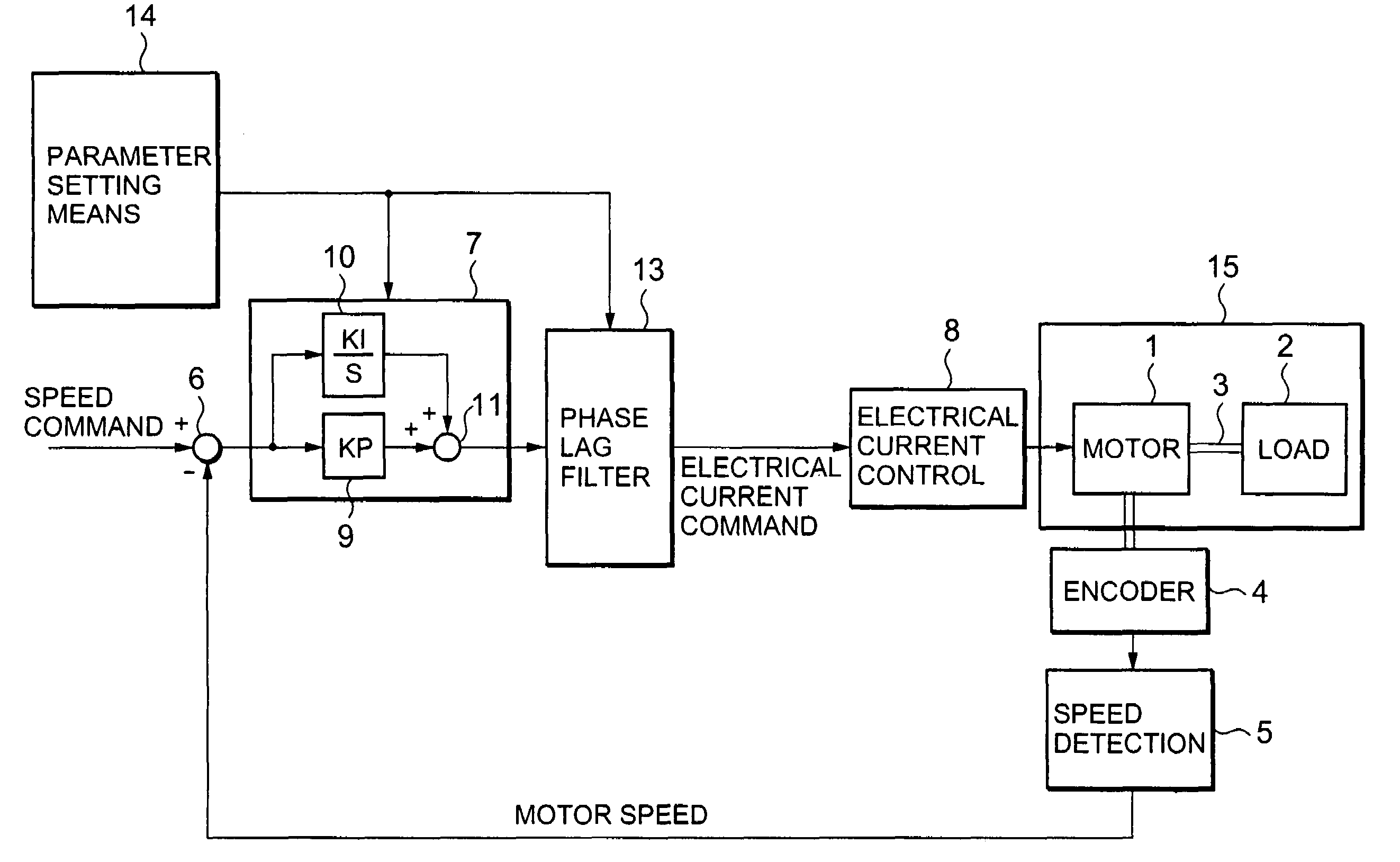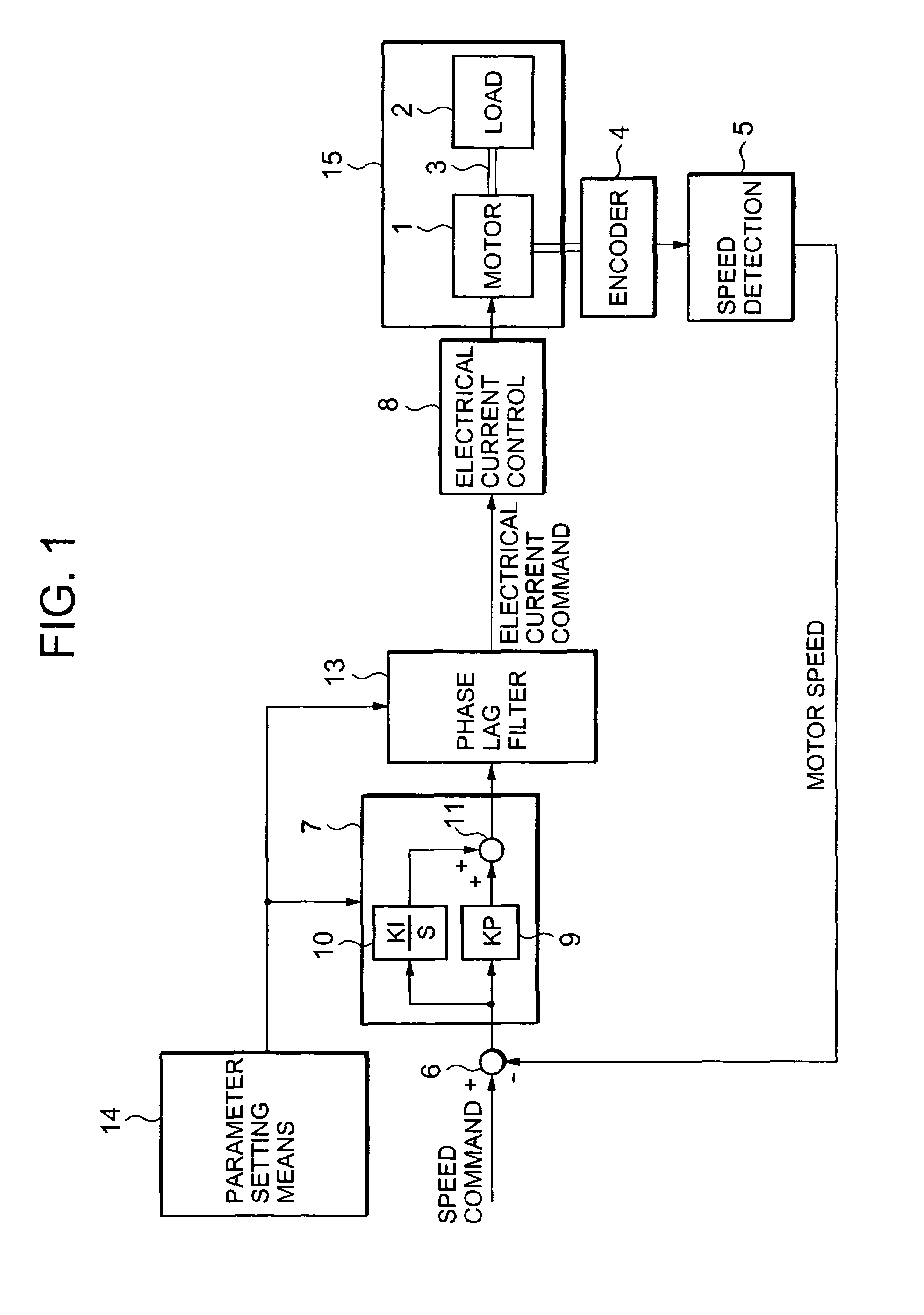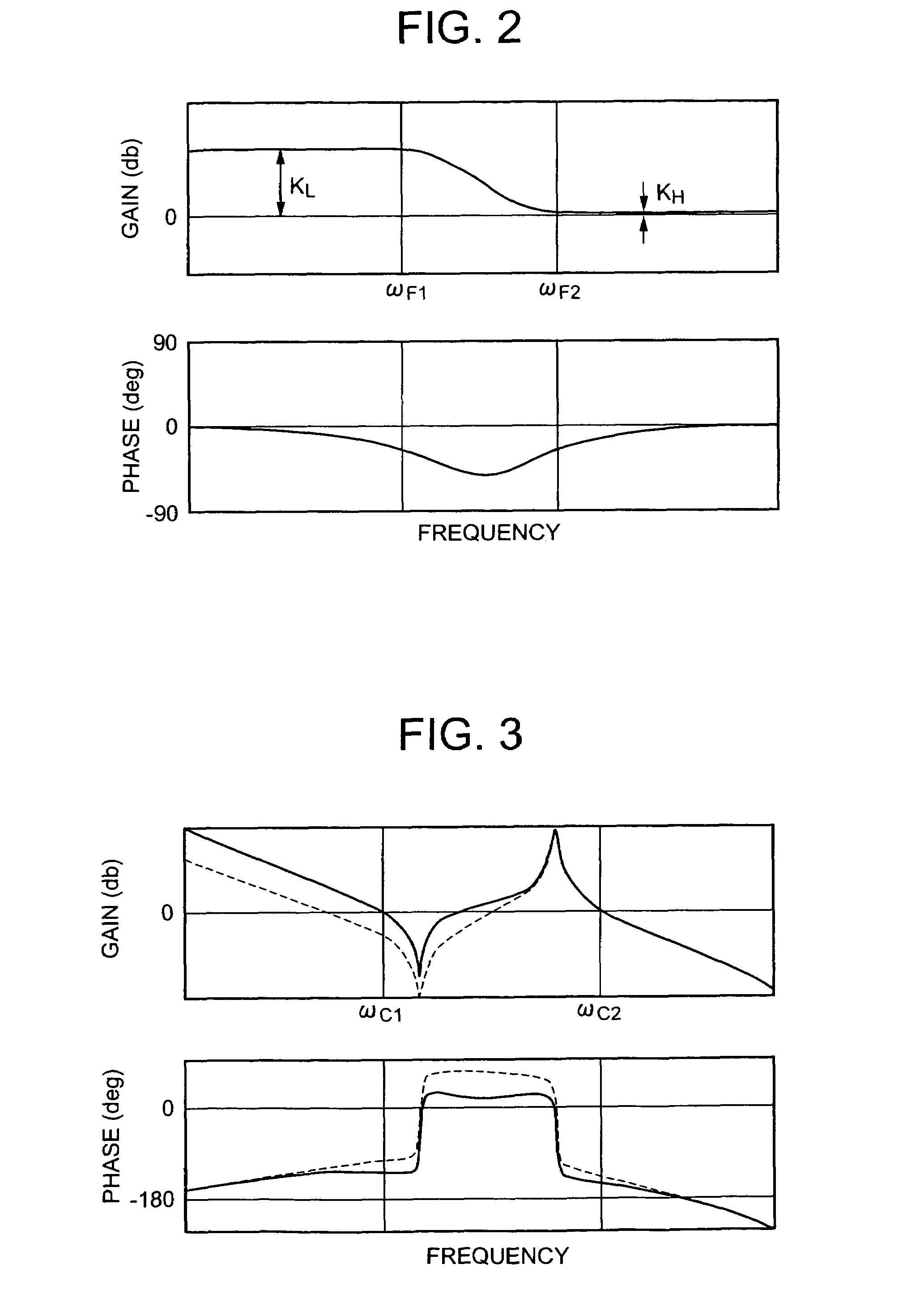Motor control device
a technology of motor control and control device, which is applied in the direction of electric controllers, ignition automatic control, instruments, etc., can solve the problems of speed fluctuations, high accuracy control, and large torque, and achieve high accuracy control, stability no longer weakened, and maintain the stability of the control system
- Summary
- Abstract
- Description
- Claims
- Application Information
AI Technical Summary
Benefits of technology
Problems solved by technology
Method used
Image
Examples
embodiment 1
[0038]A first embodiment of the present invention is explained by referring to the configuration block diagram of a control device illustrated in FIG. 1.
[0039]In FIG. 1, identical reference numerals are used for members that are identical or equivalent to those in FIG. 1, and corresponding explanations are omitted. In the figure, reference numeral 1 denotes a motor, reference numeral 2 denotes a load driven by the motor, and reference numeral 3 denotes an axle connecting the motor 1 and the load 2. The load 2 represents a moveable member of a machine driven by the motor 1, modeled as one inertial load, and the axle 3 models a mechanism for transmitting torque, generated by the motor 1, to the machine. Reference numeral 4 denotes an encoder as a position detection means, attached to the motor 1, for detecting the position of the motor 1, reference numeral 5 denotes a speed detection means for computing the motor 1 speed by differentiating the motor position detected by the encoder 4....
embodiment 2
[0054]FIG. 4 is a block diagram illustrating a configuration of the control device according to another embodiment of the present invention. Identical reference numerals are used for members that are identical to those in FIG. 1, and corresponding explanations are omitted. In FIG. 4, reference numeral 16 denotes a parameter setting means for setting characteristics for the phase lag filter and the integral gain KI, being a parameter for the speed control means; its operations are approximately the same as for the parameter setting means in FIG. 1 but one of the adjustment parameters a has to be input from outside.
[0055]This adjustment parameter a indicates the ratio of the gain KL against the gain KH at high frequencies, for the phase lag filter 13. In the parameter setting means 16, using the adjustment parameter α, with KL=α×KH, the first crossover frequency ωC1 is computed using the above equation (3). Further, as described above, the first filter frequency ωF1 is set so that the...
embodiment 3
[0063]FIG. 5 is a block diagram illustrating a configuration of the control device according to another embodiment of the invention. The same reference numerals are used for members as in FIG. 1. In FIG. 5, reference numeral 17 denotes a frequency response acquisition means for acquiring frequency response of the mechanical system, reference numeral 18 denotes the parameter setting means for setting the characteristics of the phase lag filter; and the characteristics of the phase lag filter are set based on the frequency response of the mechanical system acquired by the frequency response acquisition means 17.
[0064]Several methods are known for acquiring the frequency response of the mechanical system by the frequency response acquisition means 17. Measurement may be performed using a specialized measurement device, or the motor may be driven at random torques and a frequency analysis can be carried out on the corresponding speed response. Further, in cases where the rigidity, mass,...
PUM
 Login to View More
Login to View More Abstract
Description
Claims
Application Information
 Login to View More
Login to View More - R&D
- Intellectual Property
- Life Sciences
- Materials
- Tech Scout
- Unparalleled Data Quality
- Higher Quality Content
- 60% Fewer Hallucinations
Browse by: Latest US Patents, China's latest patents, Technical Efficacy Thesaurus, Application Domain, Technology Topic, Popular Technical Reports.
© 2025 PatSnap. All rights reserved.Legal|Privacy policy|Modern Slavery Act Transparency Statement|Sitemap|About US| Contact US: help@patsnap.com



